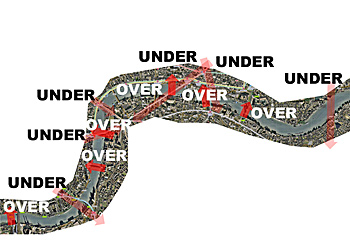- Steven Allan
- Mike Allen
- Arvindh Baburam
- Tim Bouckley
- Shing Tat Chung
- Boudicca Paloma Collins
- Patricia Vidal Delgado
- Frances Drayson
- Rupert Emerton
- Duncan Harrison
- Sheera Jacobs
- Ji Seon Kim
- Annie Lord
- Ingrid Mackay
- Liz Morris
- Alice Newsholme
- Nengi Omuku
- Bradley Zero Phillip
- Alessandra Price
- James Robertson
- Simone Rowat
- Josephine Rowntree
- Nina Royle
- Michael C. Schuller
- Daniel Schwitzer
- Susan Stainman
- Katie Surridge
- Mayu Taniguchi
- Yue Teng
- Jason Waller
- Katherine Waller
- Francesca Wheeler
- L. Wormell
- Jinwoo Yoo
- Yang Zhu
BA
Trelowarren-Wardenclyffe I: Enterprise, digital video 06:38 , 2010
This video is an exploration into the history surrounding scientist/inventor Nikola Tesla's uncompleted radio communications and wireless power station at Wardenclyffe on Long Island. Tesla never completed Wardenclyffe, which eventually may have powered New York City, due to a lack of funds. His financial backer J.P. Morgan withdrew further funding when he realised that he would not make good on his investment. Tesla, whose utopian dream was to improve the quality of everyday life through scientific innovation, intended to distribute wireless electricity for free, meaning there would be no way to charge people for distribution of this power. I am interested in the economic condition of the late 19th/early 20th century - a time when laissez faire capitalism was the order the day (not dissimilar to its resurgence in full force in the latter part of the 20th century), and the relationship between technological innovation and economics.
Tesla had planned a second site for a communications/power station somewhere on the southwest coast of England which would theoretically be able to power London. This project is partly my imagining of that second site in a location I've selected - Trelowarren (for reasons similar to Tesla's selection of Wardenclyffe) and partly an exploration of the history behind the cut-throat competition among scientists in Tesla's time and the tension between economic self-promotion and the idealism of science - both as understood under modernist ideals of progress.
This video would be shown in installation with the video on a flat screen monitor. The audio of the piece would be broadcast using an AM radio transmitter into the surrounding space which would then be picked up by an old Tesla brand radio and could - in fact - be picked up by any radio in the immediate surroundings.
Supervision, Wawina, MN, digital video 06:39, 2008
This video is an investigation into an often forgotten chapter in the history of technological hacking that predated the personal computer - phone hacking. In the 1950s, automated telephonic switchboard technology was gaining widespread use, and, to cut corners, phone companies used the same channel that customers used for voice as the channel to send operational signals through (via tones). Hackers soon found that by playing tones of certain frequencies down the line, they could hack into the phone system and make free long distance calls, set up chat-room-like conference calls between users, and even - as myth has it - phone into the White House. When personal computers came onto the scene, phone hackers (or 'phreaks') were some of the early pioneers. Phone hacking still continued through to the 1990s when digital switching systems were gradually put into place and hackers were no longer able to dial in to play with the phones. The last analog carrier system in the continental US was in Wawina, MN. Northern Telephone Company had a customer base of around 30 or 40 homes total, and, in June 2006, made the switch to digital because they could no longer handle the volume of phreaks calling in to play with their phone lines.

Circling The Thames: Over, Under, Over, Under, Over, Under, Over, Under, Over, Under, Over, Under, digital video 03:49:21 and map, 2009
www.amandawasielewski.com
- Georgina Amos
- Gyeong-Yoon An
- Orly Aviv
- Natasha Bailey
- Gabriele Beveridge
- Luca Bolognesi
- Elia Cantori
- Patricia Chi
- Hannah Chiswell
- Joe Clark
- Rose Davey
- Steven Dickie
- Claire Dorsett
- Ramon Fernandez
- Richard Forbes-Hamilton
- Joe Graham
- Andrea Greenwood
- Erin Gutierrez
- Olof Helga Helgadottir
- Chien-Ni Hung
- Shan Hur
- Kentaro Ikegami
- Yoonjin Jung
- Chinwook Kim
- Hyo Myoung Kim
- Rebecca Lennon
- Eva Lis
- Paul Magee
- Lindsay Mapes
- Victor Mavedzenge
- William May-Robinson
- Rory McCartney
- Paulina Michnowska
- Donal Moloney
- Aaron Murphy
- Nika Neelova
- Stephanie O'Connor
- Chloe Ostmo
- Junko Otake
- Hyung Jin Park
- Yeojoo Park
- Tessa Power
- Thomas Qualmann
- Saad Ahmed Qureshi
- Oliver Rafferty
- Ryan Riddington
- Mike Salter
- Peter Sant
- Holly Slingsby
- Ayuko Sugiura
- Kay Tabernacle
- Diana Taylor
- Amanda Wasielewski
- Gavin Weber
- Sarah Kate Wilson
- Jayne Wilton
- Jung Woon
- Eleanor Wright
- Lisui Zhang
MA/MFA